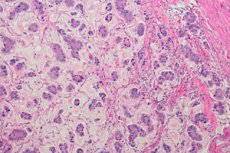Does bitterness kill cancer?
Last reviewed: 07.06.2024

All iLive content is medically reviewed or fact checked to ensure as much factual accuracy as possible.
We have strict sourcing guidelines and only link to reputable media sites, academic research institutions and, whenever possible, medically peer reviewed studies. Note that the numbers in parentheses ([1], [2], etc.) are clickable links to these studies.
If you feel that any of our content is inaccurate, out-of-date, or otherwise questionable, please select it and press Ctrl + Enter.

Human sensory organs have specific receptors with a protein component that helps us to adequately perceive our environment. Proteins responsive to light are produced in the eye retina. Proteins sensitive to odor are produced in the nasal olfactory epithelium, etc. However, it happens that such protein substances arise in structures that do not belong to the category of sensory organs. For example, how can we explain the presence of olfactory receptors in immunocytes, renal and hepatic structures? Why are taste receptors produced in lung tissue - in particular, the bitterness-sensitive protein T2R14 is present in bronchial myocytes?
Earlier, scientists at the University of Pennsylvania found out that tumor structures in head and neck neoplasms contain a large amount of T2R14 protein substances. The group of malignant tumors of the head and neck includes neoplasms arising in the throat, laryngeal regions, in the sinuses, in the oral cavity. When stimulating the receptor T2R14 with bitterness activates cell apoptosis - a kind of self-destruction of cells. The more active this process is, the more chances the patient has for recovery.
It has also been reported that surgical resection of breast cancer has a better prognosis when lidocaine is used as a local anesthetic during surgery. In this situation, lidocaine significantly reduced the likelihood of neoplasm recurrence.
The scientists dedicated their new work to the activation of the T2R14 receptor by lidocaine. The latter acts indirectly through certain molecules, increasing the level of calcium ions inside the cell. If it is a sensory-taste receptor or a myocyte of the respiratory tract, the increase in such a level is immediately reflected in the functionality of ion pathways responsible for the conduction of electrochemical oscillations and the contractile activity of muscles.
When T2R14 is activated in a cancerous structure, free calcium ions are directed to mitochondria, where oxidative processes are triggered. With the participation of oxygen, nutrient molecules are broken down and energy is stored in a form suitable for a particular cell. As a by-product of this process, active oxygen forms are formed - oxidizing molecules capable of damaging protein substances, fatty cells and nucleic acids. Increase in the level of calcium-ions leads to increased production of active oxygen species that disable the mechanism of cleansing from protein residues, which, in turn, starts the program of self-destruction - apoptosis.
Scientists have traced the relationship between the administration of lidocaine and the work of bitter receptors in the structures of squamous cell cancer head and neck. However, to date, it is too early to draw definite conclusions: research is still ongoing. It is quite possible that this anesthetic can be used to enhance the effect of the anti-tumor treatment methods used.
Full details of the study are available on Penn Medicine News' Penn Medicine News page
